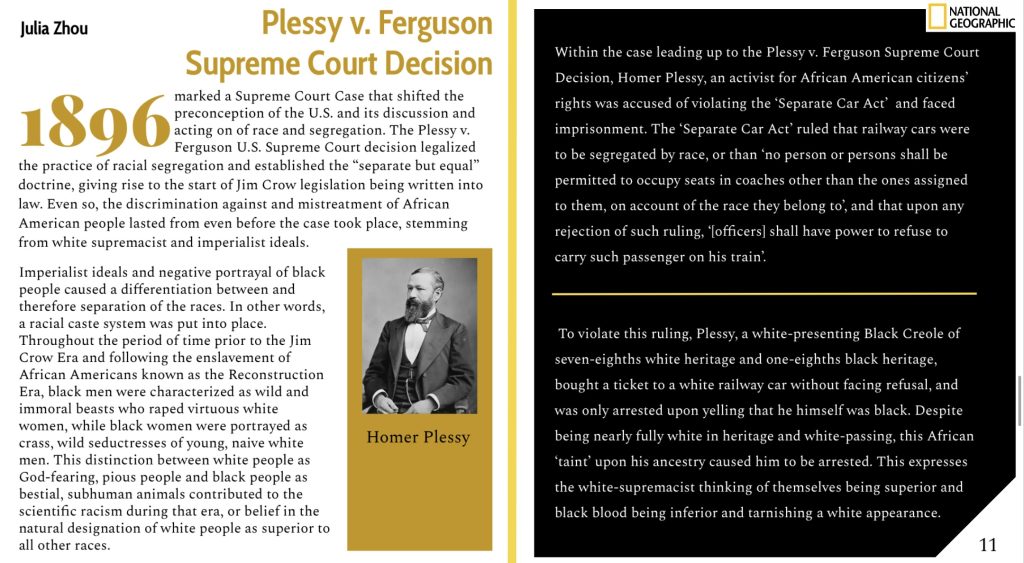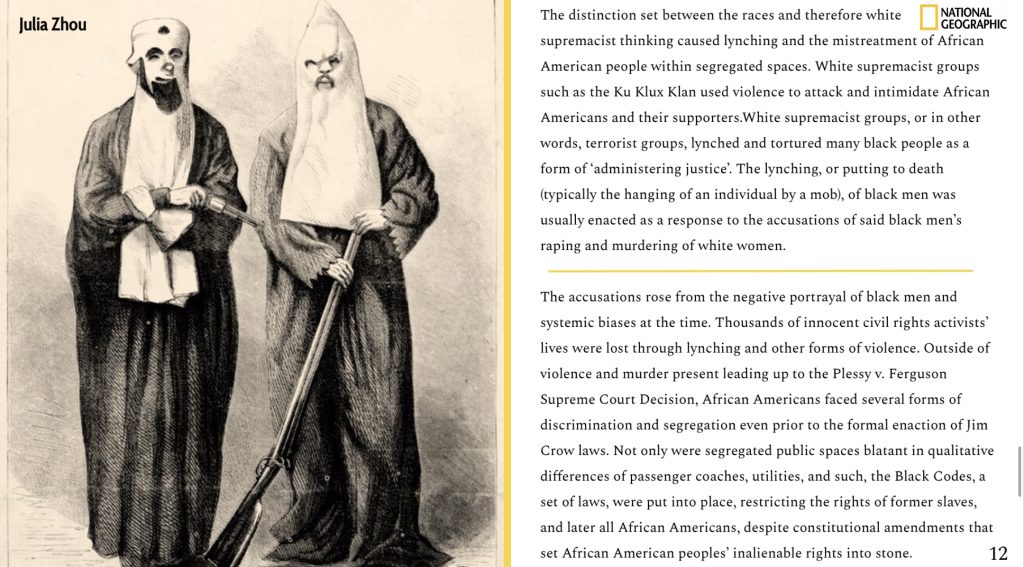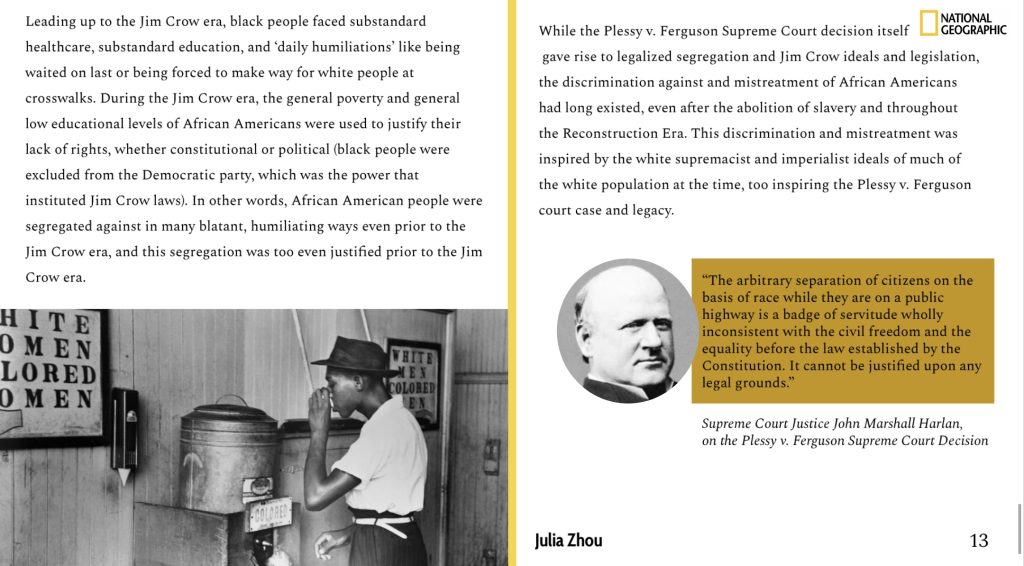Maybe he likes me back. Maybe he loves me the way I love him.
(He’s chest-heaving, knee-slapping, laugh-out-loud guffaws, head splayed backward, pearly whites glistening. He’s cheeky grins, floppy, staticky hair, sticking straight up like a balloon-tousled mane. He’s dimples, my favorite bedhead, scuffed Jordan 1’s, diehard Swiftie. He’s stupid pick-up lines, persistent five-o’-clock shadow, ears that stick out a little, reused and reclaimed dad jokes. He’s skinny, thin frame, a smile wars have been fought over, head tilted and tongue sticking out just so when he’s thinking. I study him like a Monet. He’s my Mona Lisa.)
He contemplates my hazy, muddy brown eyes like they’re something beautiful. (I’m shifty eyed, habitual daydreamer, dances like the multiverse collapses today. I’m frizzy French braids, hawkish nose and gaze, too-wide grin, laughs with uvula showing. I’m journals filled with him and his smile – his smile! – , perfect messes, markers and gel pens and Sharpies left uncapped – my desk, used tissues, the covers of my notebooks, covered in his monogram – , trail mix and cold showers. I’m unhealthy obsessions with Led Zeppelin, plant mom of seven cacti, seven pairs of socks, seven glasses frames, seven empty bags of Ruffles and Lay’s potato. He thinks I’m beautiful. Am I beautiful?)
I want to be beautiful.
(I’m acne, constellations of dots and bumps, scabs and whiteheads and blackheads. I’m toothpaste on pimples, soaping down my face, homemade remedies. I’m skincare videos at two am, zoning out into space, dirty fingernails stabbing at my skin, peeling off layers of discomfort and pain and insecurities. I’m obscene amounts of skincare products, flinching when someone’s eyes shift from my eyes to my forehead. I’m ‘holy grail products’, crying because he’ll never like me if I keep looking like a toad, warts and bulging eyes and dark circles left as battle scars from nights unslept, wallowing in self-hate and desolation.
I’m fat. I’m too-thick thighs, sausage fingers, squishy forearms, neck rolls. I’m chipmunk cheeks, plump midriff, ‘built like a brick’. I’m non-existent jawlines, flabby fistfuls of flesh when I sit. I hate the two that comes after the one, the reminder that I’m 30 pounds heavier than my skinny white friends. I’m spurts of motivation and living off of apples and eating small meals then endless snacking and chips and soda and candy. I’m wrappers lining my mattress, in my dresser, on the top shelf of my closet, under the desk, inside my pillowcase, in my brother’s room. I’m not that fat. I don’t get to feel sorry for myself when my BMI says otherwise. That doesn’t mean I have to like myself very much.
I’m thick eyebrows, peach fuzz, Super Mario ‘stache, unseemly clumps of long, BLACK hairs in my nether regions. I’m back hair, hairy knuckles, hairy toes, fuzzy bust, gorilla girl. I’m spiky thighs, prickly knees, spiny calves.
I’m slits for eyes, flat nose, double chin, too-thick lips, receding hairline. I’m ugly smiles, awkward posture, long face, horseface. I’m tan skin, greasy T-zone, short neck, braceface. I’m flat, stringy hair, deep dimples, no assets. I’m overly peppy, too loud, dirty jokes, iPad kid humor. I’m tall and lanky, never knows what to say, egoistic and self-loathing. I’m weak chins, round nostrils, uncool, Asian, nerd, geek, rot in hell. I’m fantasies, drowning myself in romance and poking fun at other couples, love is ‘ew’.)
Maybe he’ll bike past my house like he does her’s, memorizing the minute details and the lace trimmings and the orchids lining the driveway.
(His front yard is stamped with touch-football tournaments, sack races, ‘race ya to the mailbox’, impromptu soccer games, climbing trees. His house is cozy, erupting, overflowing, filled to the brim with love, joy, children, fun, shouts, laughter, giggles, ‘squee’! His lawn is littered with water bottles, Capri-Sun’s, deflated soccer balls, a pair of basketball socks, a knee brace, half a muffin, a bill. His garden is filled with wilted tulips, trampled by the races to the pool, rounds and rounds of tag, freeze tag, hide and seek tag, ‘tag, you’re it!’, stargazing outdoors, midnight games of manhunt of the summer. Arid summer days, his window’s locked and bolted. On breezy, dreamy, misty summer nights, his window remains flung open, inviting stargazing and deep breaths and reading on the bay window. He’s seen me out there. He’s never said anything.)
Would he like me better if I looked more like her?
(She’s perfect, glossed lips, oversized tees, scrunchies in her coily hair. She’s Converse high tops, bandeaus, creamy strips of silky skin in the ravine between her cropped, cropped top and her wide-leg jeans. She’s dark, hair the color of midnight, eyes huge and searching and enough to get lost in. She’s luscious lips, glorious legs for days, pearly whites, puns. She’s winky winks, dimpled smirks, red red tongues on pink lips. She’s Harry Styles and Friends, tea and Starbucks’ matcha – a matcha green tea with oat milk and heavy cream, 2 pumps of vanilla, 1 pump of hazelnut, sky-high sprays of whipped cream – , gymnastics and dancing on the barre, en pointe. She plays flute and she sings and she stars in a musical every year. She’s nothing like me.)
He’d like me if I looked like her. Who am I kidding? He’d never like someone like me.
I want to be like her. I want to be like her. I want to be her. I want to bewanttobeher. Iwanttobeherwanttobeherwanttobewwantwantwantobe.
Her.


